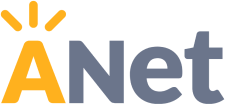A message from ANet’s leaders to our partners and friends:
Dear friend of ANet,
Over the past two months, as we’ve listened to the concerns and questions from educators from around the country, I’ve seen a strong theme emerge: learning loss and how to address it. We know the learning loss from COVID-19 will be different than anything we’ve seen before, and that the most marginalized students will face the biggest barriers to receiving equitable instruction. Today’s newsletter zeroes in on how the pandemic will change and amplify normal learning loss in four specific areas. We’ve provided two checklists to help you assess and address it as well as more information on a webinar to help inform your fall academic re-entry plans.
What is learning loss?
Learning loss refers to the content gaps students will face due to school closures and other disruptions. We’ve identified four factors that contribute to amplified learning loss during the global pandemic:
-
Natural Learning Loss: A recent study suggests there will be more learning loss from COVID-19 than what teachers would typically see over summer vacation, with especially large declines in math.
-
Unfinished teaching: With interruptions and the transition to distance learning, teachers have likely taught 75% or less of the year’s planned content.
-
Unfinished learning: Ongoing disruptions mean students will struggle with content and skills they’ve been introduced to, but not yet had the chance to master at grade level.
-
A compounding impact for students who are experiencing increased economic challenges, are from racially marginalized communities, have inequitable access to quality distance learning, are multi-language learners, have learning and attention differences, and/or are immunocompromised. Our most marginalized communities will experience the most amplified learning loss.
What can we do about it?
To envision how we might address learning loss when schools reopen, we need to have a firm idea of how to bring the current school year to a close. We should be clear about what we need right now in order to prepare what comes next. Right now, school districts can implement strategies to minimize learning loss. Leaders should ensure distance learning instruction:
-
Utilizes materials aligned to grade-level expectations
-
Reviews the most essential content and knowledge
-
Strategically introduces new material by prioritizing prerequisites
-
Works to ensure all students can equitably engage in distance learning
How can my school or district assess where students are and what they need?
Continuing to assess learning is critical to identifying learning loss. But what should assessments look like right now? These guiding principles can serve as a starting point:
-
Put students--particularly the most vulnerable--at the center, and consider the context they’re in
-
Share assignments that can be completed flexibly
-
Consider limiting the length of time students are required to sit and complete tasks independently to 30 minutes or less
-
Be prepared to provide feedback for all assignments or assessments where students are sharing back what they know or understand,
-
Create opportunities for students to feel successful as well as to feel challenged
-
When it makes sense, prioritize qualitative insights over quantitative: reflect students’ thinking, highlight both where they did well and where you’ll want to support them to go next
-
Prioritize keeping students engaged and coming back
It is always a part of our mission to elevate the voices of our partners in order to create a dialogue and work alongside you in thought-partnership and support. I heard a leader say recently: “When you think about extraordinary learning loss, for some kids there won’t be a plan in place. How do we start collaborating in ways that we haven’t in the past?” As we work together to answer this question, we hope you’ll join us for one of the opportunities to connect below.
In partnership,

